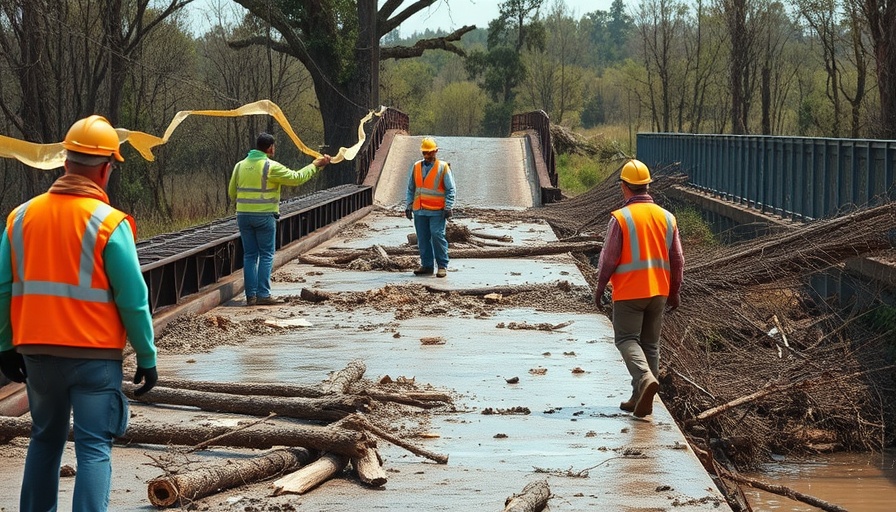
Understanding the Texas Flood Tragedy: What Went Wrong?
The recent devastating floods in Texas have raised serious questions about urban planning and risk management. Insufficient risk mapping and excessive development have been identified as key factors leading to these tragic events. The disaster not only resulted in property damage but also loss of life, prompting a reevaluation of how communities understand and mitigate flood risks.
What is Risk Mapping and Why is it Crucial?
Risk mapping involves identifying areas vulnerable to natural disasters like floods. These maps are vital for creating zoning regulations, informing residents, and guiding local infrastructure improvements. Inadequate risk mapping means that local governments may not fully grasp the scope of their flood risks, leaving neighborhoods unprepared for worst-case scenarios. Had better flood risk maps been employed, the consequences of the flooding could have been significantly lessened.
The Dangers of Overdevelopment
As cities grow, the demand for housing often leads to overdevelopment in flood-prone areas. Raw land is often cleared for new homes and businesses, disrupting the natural landscape that absorbs rainfall. This development not only increases runoff but also reduces the land's natural ability to manage excess water, exacerbating the risks posed by flooding. Developers and city planners must prioritize sustainable strategies that consider long-term environmental impacts.
Lessons from Other Flood Events
Comparatively, other regions have faced similar challenges. Cities in the Midwest and Northeast have struggled with flood management, leading to policy changes and a heightened focus on sustainability. For instance, in certain areas of New York, rain gardens and green roofs have been adopted to absorb and manage rainfall better. Learning from these approaches could provide valuable insights for Texas and other flood-prone areas seeking better solutions.
Looking Ahead: Future Predictions and Insights
The changes in climate patterns suggest that flooding events will only become more frequent and severe. Thus, it is crucial for urban planners to adopt a forward-thinking approach that includes climate resilience in their designs. Communities must invest not only in robust infrastructure but also in community education about flood preparedness and response strategies.
Change Is Possible: Actions Communities Can Take
Local governments, contractors, and residents can work together to improve flood resilience. Actionable steps include:
- Implementing stricter zoning laws to prevent development in high-risk areas.
- Enhancing green spaces to absorb water during rain events.
- Utilizing advanced technology and data to create more precise risk maps.
- Educating homeowners and builders about the importance of flood resilience in housing design.
Emotional and Human Interest Insights
The human cost of flooding is often underrepresented in discussions about urban planning. Each statistic represents a family, a home, a life disrupted or lost. Emphasizing personal stories and local heroes who stepped up to help during the floods reminds us of our shared responsibility to enact change. By prioritizing the safety of our communities, we honor those affected by these tragedies.
Common Misconceptions about Flood Risks
A prevalent misconception is that floods only affect low-income neighborhoods or rural areas. In truth, floods can strike any area, regardless of socio-economic status. This perception can prevent informed decision-making and create a false sense of security among residents. Thorough understanding and awareness are essential for everyone, paving the way toward a more prepared and resilient community.
Your Role in Flood Preparedness: What You Can Do
As a homeowner, knowing your flood risks can drastically impact your preparedness and response. Start by assessing your property for vulnerabilities. Talk to local planners about how your community addresses flood risks. By becoming informed and involved, you can help create a safer environment for yourself and your neighbors.
In conclusion, the Texas flood tragedy serves as a stark reminder that there is much work to be done in improving how communities prepare for, respond to, and recover from natural disasters. By addressing the failures of risk mapping and overdevelopment directly, we can implement actionable changes that ultimately save lives and protect homes. Encourage your local representatives to prioritize sustainable practices in urban planning for a flood-resilient future.
 Add Row
Add Row  Add
Add 




Write A Comment